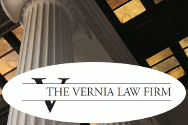by Ben Vernia | October 28th, 2010
In U.S. ex rel. Bahrani v. Conagra, Inc., issued on October 26, the Tenth Circuit Court of Appeals reversed a relator’s meager jury award after concluding that the Supreme Court’s interpretation of the scienter requirement in the Allison Engine case applied equally to the (subsequently amended) reverse false claims provision in the False Claims Act, 31 U.S.C. 3729(a)(7).
The relator alleged that Conagra frequently modified meat and hide export certificates rather than obtaining new ones in order to avoid paying a fee for the replacements. After an initial appeal, the district court bifurcated the trial, trying the meat certificates case on the question of the relator’s status as an original source, followed by a trial on the merits of the hide certificate claims. The jury found the relator was not an original source on the meat certificate claims, but concluded that the company had altered five hide certificates in a “major” or “significant” way. After trebling the jury’s damages finding of $107.50 and adding five penalties of $5500 each, the district court entered judgment for the relator (and government) of $27,822.50. The court subsequently adopted a magistrate’s report and recommendation cutting the relator’s attorney’s fee request from approximately $3.5 million to about $9300. Both sides appealed.
The Tenth Circuit’s most significant holding addressed Conagra’s argument that the court’s entry of judgment on the jury’s finding of five false hide certificates was contrary to a special interrogatory asking whether any of the certificates had been changed with the intent of concealing, avoiding or decreasing the obligation to pay for the a replacement certificate – the jury had answered no. The district court had noted the company’s argument that the language interpreted by the Supreme Court in the Allison Engine case (i.e., the use of a false record and conspiracy provisions of the False Claims Act, 31 U.S.C. 3729(a)(2) and (3)) was substantially identical to that used in the reverse false claims provision (3729(a)(7)), and so the relator was required to prove the company’s intent to avoid or decrease its obligation when it made the changes. In ruling against the company, the district court stated (somewhat presciently):
I apply this standard out of an abundance of caution and am aware that Allison Engine may support the imposition of a higher (specific intent) level of scienter for reverse false claims under the Act. However, it will be for the Tenth CIrcuit to hold Mr. Bahrani to this higher standard, not me.
The Tenth Circuit did just that, concluding that the similarity of language in the two provisions dictated this result. The Court disagreed with the government’s argument, as amicus, that those claims should be retried, holding instead that the award for the relator must be reversed and judgment rendered against him. (The court observed in a footnote that Congress had subsequently overruled the Allison Engine case, but had not made this retroactive.)
On the relator’s appeal of the original source judgment against him, the court upheld the district court’s decisions to bifurcate the trials, and on several evidentiary issues. The Tenth Circuit concluded that the district court had erred in instructing the jury that, for the relator to be an original source, he must not only have witnessed changes to the certificates, but he must have understood the significance of this conduct under the False Claims Act. The Court of Appeals noted that this went too far, and that the relator only had to show that he had direct and independent knowledge of the information on which his allegations were based – i.e., in his case, that he had direct and independent knowledge that company employees were making “major” or “significant” changes to the forms, regardless whether he reasonably believed that the changed he observed were fraudulent. The court nevertheless concluded that this error did not affect his substantial rights, because his knowledge was far too limited for a jury to find that he was an original source.

